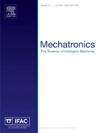全球最佳运动轮廓,提高能源效率,在工业定位应用
IF 3.1
3区 计算机科学
Q2 AUTOMATION & CONTROL SYSTEMS
引用次数: 0
摘要
点对点机构在工业中得到广泛应用。驱动这些机构的电动机占全球能源消耗的很大一部分。因此,必须考虑降低其能耗的方法和技术。运动轮廓优化提供了一个经济有效的机会来减少能源消耗,而不需要额外的硬件调整或投资。因此,发现全局最优是至关重要的,它代表了整个设计空间的整体最佳解决方案,以确保充分实现优化潜力,而不是满足于局部最优,它可能只代表了设计空间的有限区域内的最佳解决方案。后者在目前的文献中仍然是一个挑战。本文介绍了一种利用区间分析来保证在设计空间中发现全局最优的新方法。它通过将设计空间划分为更小的间隔,使用间隔算法来评估这些间隔上的功能,并系统地消除和改进间隔以确定全局最优的位置来实现这一目标。然而,要使用区间分析,需要一个有限的设计空间。因此,本文使用Chebyshev基表示的多项式来描述运动轮廓,与经典基表示的多项式相比,具有有限的设计空间和最少的设计参数数量的优点。此外,本文还表明,用符号表示运动轮廓可以使运动约束线性化,从而提高区间分析的计算效率和收敛速度。针对初始有界设计空间容易高估可行设计空间的问题,提出了一种减小初始设计空间的方法。细化设计空间使区间分析需要更少的评估,促进更快的优化。为了使所提出的方法在工业上得到广泛应用,从CAD仿真中提取了系统特性J(θ)和Tl(θ)来构建目标函数。最后,测量结果表明,拾取装置的均方根扭矩降低了38.4%,能耗降低了51.2%,验证了该方法的有效性。本文章由计算机程序翻译,如有差异,请以英文原文为准。
Global optimum motion profiles for enhanced energy efficiency in industrial positioning applications
Point-to-point mechanisms are widely used in industry. The electric motors driving these mechanisms are responsible for a significant portion of the global energy consumption. Therefore, it is essential to consider methods and technologies to reduce their energy consumption. Motion profile optimization offers a cost-effective opportunity to reduce energy consumption without the need for additional hardware adaptations or investments. Hence, it is crucial to discover the global optimum, representing the overall best solution across the entire design space, to ensure that the full optimization potential is realized, rather than settling for a local optimum, which may only represent a superior solution within a limited region of the design space. The latter remains a challenge in the current literature. This paper introduces a novel approach that utilizes interval analysis to guarantee the discovery of the global optimum within the design space. It achieves this by dividing the design space into smaller intervals, employing interval arithmetic to evaluate the functions over these intervals, and systematically eliminating and refining the intervals to pinpoint the location of the global optimum. However, to use interval analysis, a bounded design space is required. Therefore, this paper describes the motion profile using polynomials expressed in the Chebyshev basis, offering the advantage of a bounded design space and a minimal number of design parameters compared to polynomials expressed in the classical basis. Additionally, this paper shows that symbolically formulating the motion profile allows linearization of the kinematic constraints, enhancing the computational efficiency and convergence speed of interval analysis. Furthermore, a method for reducing the initial design space is introduced, as the initial bounded design space tends to overestimate the feasible design space. Refining the design space enables interval analysis to require fewer evaluations, facilitating faster optimization. To allow wide industrial adoption of the proposed method, the system properties and are extracted from CAD simulations to build the objective function. Finally, measurements indicate a reduction in root-mean-square (rms) torque of a pick-and-place unit by up to 38.4% and a reduction in energy consumption of up to 51.2%, validating the proposed approach’s effectiveness.
求助全文
通过发布文献求助,成功后即可免费获取论文全文。
去求助
来源期刊

Mechatronics
工程技术-工程:电子与电气
CiteScore
5.90
自引率
9.10%
发文量
0
审稿时长
109 days
期刊介绍:
Mechatronics is the synergistic combination of precision mechanical engineering, electronic control and systems thinking in the design of products and manufacturing processes. It relates to the design of systems, devices and products aimed at achieving an optimal balance between basic mechanical structure and its overall control. The purpose of this journal is to provide rapid publication of topical papers featuring practical developments in mechatronics. It will cover a wide range of application areas including consumer product design, instrumentation, manufacturing methods, computer integration and process and device control, and will attract a readership from across the industrial and academic research spectrum. Particular importance will be attached to aspects of innovation in mechatronics design philosophy which illustrate the benefits obtainable by an a priori integration of functionality with embedded microprocessor control. A major item will be the design of machines, devices and systems possessing a degree of computer based intelligence. The journal seeks to publish research progress in this field with an emphasis on the applied rather than the theoretical. It will also serve the dual role of bringing greater recognition to this important area of engineering.
 求助内容:
求助内容: 应助结果提醒方式:
应助结果提醒方式:


